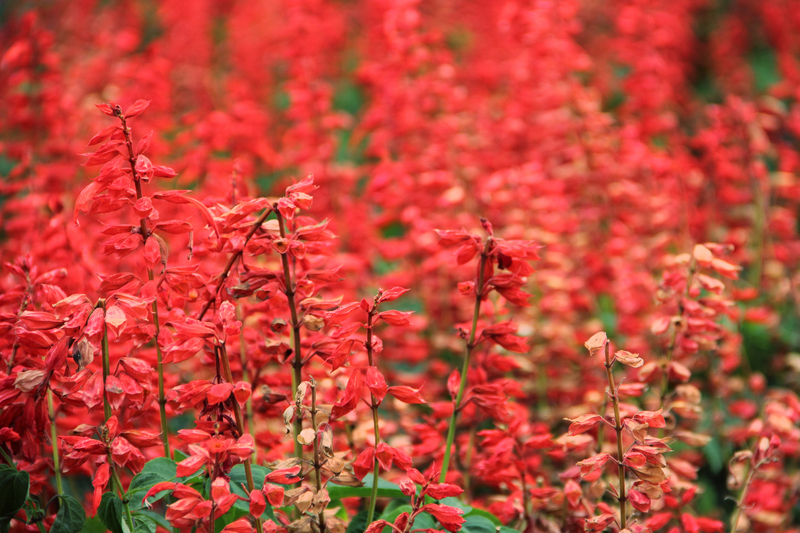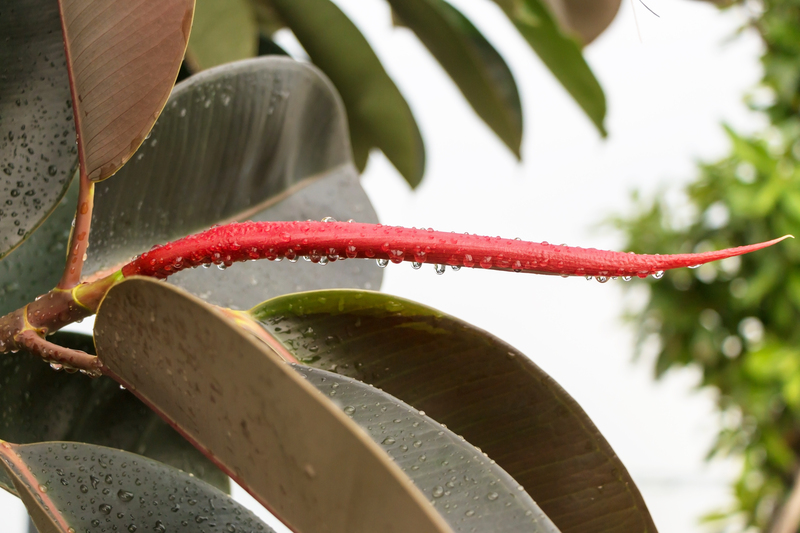Orchid Care for the Plant Enthusiast
Posted on 04/06/2025
Orchid Care for the Plant Enthusiast: A Comprehensive Guide
Orchids are one of the most alluring and diverse plant families on earth, coveted for their beauty, elegance, and fascinating biology. Whether you are a seasoned plant lover or just embarking on your journey with these gorgeous blooms, mastering orchid care is both rewarding and attainable. In this article, you'll discover everything you need to know for thriving orchids--unraveling myths, addressing common challenges, and unlocking the secrets that make orchid cultivation truly gratifying.

Understanding Orchids: The Basics of Orchid Plant Care
Before delving into specific care techniques, it's essential to understand what makes orchids unique among houseplants. With over 25,000 naturally occurring species and more than 100,000 hybrids, orchids offer an endless variety of colors, shapes, and sizes. But while their appearance can be dazzling, their care often follows the same fundamental principles.
The Anatomy of Orchids
- Epiphytic Roots: Many orchids, such as the popular Phalaenopsis (Moth Orchid), anchor themselves to trees in their natural habitat. Their roots are adapted to absorb moisture and nutrients from the air.
- Pseudobulbs: Some orchids store water and nutrients in swollen stems, known as pseudobulbs. This enables them to survive periods of drought.
- Leaves: Orchid leaves vary but are often thick and waxy, reflecting their adaptations to varied light and humidity levels.
- Flowers: Orchids are famous for their intricate blooms. Each flower is composed of three petals and three sepals, with the central petal forming a distinct lip (labellum).
Understanding these characteristics is crucial for proper orchid plant care and ensures you can provide the best environment for your treasured plants.
Selecting the Right Orchid for Your Environment
Successful orchid care begins with choosing a species or hybrid suited to your lifestyle and home conditions. Some varieties are more forgiving than others:
Popular Orchid Types for Indoor Enthusiasts
- Phalaenopsis (Moth Orchid): Extremely popular for beginners due to their ease of care and long-lasting blooms.
- Cattleya: Known for large, fragrant flowers; requires bright light and regular watering.
- Dendrobium: Offers striking canes and diverse flowers; appreciates good air circulation.
- Oncidium (Dancing Lady): Produces clusters of small, delicate flowers and thrives in indirect light.
- Paphiopedilum (Lady's Slipper): Noted for its unique pouch-like flower; prefers lower light levels and consistent moisture.
Consider your home's natural light, humidity, and temperature before selecting species. Matching the right orchid to your environment is a foundational step in achieving long-term blooming success.
Best Practices for Watering Orchids
One of the most commonly misunderstood aspects of caring for orchids is their watering needs. Orchids require a balance between moisture and aeration, as their roots are prone to rot if left sitting in water.
How Often to Water Your Orchid
- Most orchids prefer to dry out slightly between waterings.
- Watering frequency depends on species, potting medium, humidity levels, and pot size.
- Phalaenopsis, for example, typically needs watering every 7 to 10 days.
Best Watering Techniques
- Water thoroughly so that water runs out the pot's drainage holes.
- Use room temperature water; avoid softened or chlorinated water if possible.
- Morning watering is preferable to allow foliage to dry by evening and prevent fungal issues.
Tip: Stick your finger about an inch into the growing medium. If it feels dry, it's time to water. When in doubt, it's better to underwater than overwater your orchid.
Light Requirements for Thriving Orchids
Proper light is vital for healthy orchid growth and abundant blooms. While many believe orchids require constant bright sunlight, most species prefer indirect light to avoid leaf scorching.
Determining the Best Location
- Eastern-facing windows provide ideal gentle morning sun for most orchids.
- In brighter southern or western exposures, provide dappled shade using sheer curtains.
- Low-light orchids, such as Paphiopedilum, can tolerate north-facing windows or artificial grow lights.
Signs of Light Stress
- Yellowish or red-tinged leaves indicate too much light.
- Dark green, limp foliage suggests insufficient light.
Regularly rotate your orchid to ensure all sides receive even light, promoting symmetrical growth and flowering.
The Right Temperature and Humidity for Your Orchid Plant
Orchids hail from diverse climates, but most cultivated indoor orchids prefer:
- Daytime temperatures: 65-80?F (18-27?C)
- Nighttime temperatures: 55-65?F (13-18?C)
- Relative humidity: 40-60%
Maintaining proper temperature and humidity helps activate flowering and keeps your orchid robust.Use a humidifier or pebble tray under your orchid to boost humidity during dry winter months if needed. Be cautious to avoid cold drafts or direct hot air, which can stress the plant.
Choosing the Ideal Orchid Potting Mix
Unlike most houseplants, orchids do not thrive in standard soil. Instead, they require specialized orchid potting media that provides excellent drainage and air exchange.
Common Orchid Potting Mix Ingredients
- Fir bark: Offers good aeration and moderate moisture retention.
- Sphagnum moss: Holds moisture, often used for seedlings or high-humidity environments.
- Perlite, charcoal, or coconut husk: Enhances drainage and longevity of the mix.
- Expanded clay pellets: Used in semi-hydroponic orchid growing systems.
Repot your orchid every 1-2 years to refresh the medium and prevent potential root rot from decomposed material. Repotting is also an excellent opportunity to inspect and trim any dead or diseased roots.
Feeding and Fertilizing Orchids
Orchids are light feeders compared to other houseplants but still benefit from regular fertilization. A balanced approach keeps them healthy and encourages vibrant blooms.
How to Fertilize Your Orchid
- Use a balanced (20-20-20) fertilizer, specifically labeled for orchids if possible.
- Dilute the fertilizer to half or quarter strength.
- Feed your orchid every 2 to 4 weeks during the growing season. Flush with plain water monthly to prevent salt build-up.
- Many growers follow the mantra: "Weekly, weakly"--a small dose of fertilizer every week to avoid overfeeding.
Reduce or stop fertilizing during the winter dormancy period when the orchid's growth naturally slows.
Blooming Cycles and Encouraging Reblooming
The joy of orchid care is undeniably found in their spectacular flowers. Follow these tips to encourage your orchid to re-bloom after its initial flowering :
- Temperature Drop: Many orchids need a dip of about 10?F (5?C) between day and night to initiate blooming.
- Proper Light: Ensure your orchid receives adequate, indirect sunlight.
- Water and Fertilize Appropriately: Avoid overwatering and switch to a blooming fertilizer when spikes develop.
- Patience: Some orchids rest for months before shooting a new flower spike.
If you notice the flower spike turning brown, you can cut it back to the base. If it stays green, you may trim it just above a node, which could prompt a secondary bloom spike.
Common Orchid Problems and Troubleshooting
Even with the best care, issues can arise. Orchid enthusiasts often encounter these common challenges:
Common Orchid Pests
- Scale: Small, oval pests that suck sap from leaves and stems. Treat with horticultural oil or insecticidal soap.
- Spider mites: Fine webbing and stippled leaves. Increase humidity and clean leaves with a damp cloth.
- Mealybugs: Cottony white spots; remove manually and treat with an appropriate pesticide.
Diseases
- Root rot: Caused by overwatering or soggy potting mix. Always use pots with drainage holes and let the medium dry slightly between waterings.
- Leaf spot: Fungal or bacterial infections often related to excess moisture on leaves. Remove affected leaves and improve air circulation.
Regularly inspect your orchid for pests and signs of disease, addressing problems early to keep your collection healthy.
Orchid Accessories and Tools for the Enthusiast
Enhance your orchid care routine and enjoy greater success with these handy tools:
- Humidity trays or mini-greenhouses for maintaining optimal moisture levels.
- Digital hygrometer and thermometer to monitor home conditions closely.
- Specialized orchid pots with ample drainage and good aeration.
- Pruning shears or sterilized scissors for trimming roots and flower spikes.
- Gentle orchid support stakes to help keep flower spikes upright as they grow.
Expanding Your Collection: Tips for Propagating Orchids
For the dedicated plant enthusiast, propagating orchids is an exciting way to grow your collection. While not as simple as with some houseplants, there are effective methods:
Division
- Best suited for sympodial orchids (such as Cattleya or Dendrobium).
- Divide the plant during repotting, ensuring each division has at least 3-4 healthy pseudobulbs.
- Use sterile tools and repot divisions in fresh medium.
Keiki Propagation
- Some orchids (notably Phalaenopsis) may produce plantlets or keikis on flower spikes.
- Once the keiki develops roots (at least 1-2 inches long), carefully remove and pot it up separately.
Each propagation technique requires patience, precision, and an understanding of your orchid's growth habits.

Final Tips for Passionate Orchid Keepers
- Observe your plants regularly: Every orchid expresses its needs through its leaves, roots, and blooms.
- Don't be afraid to experiment: Every indoor environment is unique, so adaptation is key.
- Join orchid societies or forums: Connect with other orchid lovers for support and inspiration.
- Label your orchids: With countless varieties, keeping track of each plant's preferences simplifies your care routine.
Orchid care can seem daunting at first, but with patience, observation, and the right strategies, every plant enthusiast can enjoy lush, long-lasting blooms and an ever-growing passion for these spectacular plants.
Conclusion: Embrace the Joy of Caring for Orchids
With their diverse beauty and surprising resilience, orchids hold endless fascination for plant enthusiasts. By understanding their unique needs and following the practical advice in this guide, you'll be well on your way to nurturing vibrant, thriving orchids in your own home. Remember that success in orchid care is a journey--part science, part art, and entirely rewarding!
Ready to bring more orchids into your life? Experiment with varieties, stay curious, and let your love for these enchanting blooms flourish.

